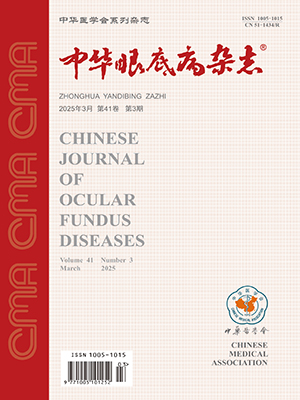Objective To establish an allogenic intraocular melanoma model and observe its pathological features.Methods Thirty-six kunming mice were devided randomly into 3 groups with 12 ones in each, and allogeneic melanoma cells B16F10(C57BL16) were inoculated into the anterior chamber (AC), vitreous cavity (VC) of right eyes and under the skin (subcutaneous, SC) of the back of right feet of each grup respectively. The incidence of tumor occurance, time of breaking through the eyeball and other general pathologic features of the tumor were observed by slip-lamp biomicroscopy and operating microscopy for continuous 32 days, and the results were statistically analyzed. Pathological examination was given for tumors at last.Results The incidence of tumor occurance in both AC (12/1 2 eyes) and VC group (11/11 eyes) was higher than that in SC group (2/12 feet)(χ2=17.143, P=0 .000;χ2=16.218, P=0.000). The time of eyeball diabrosis was 11-13 days in AC group and 13-32 days in VC group, and there was significant difference between these two groups (Log Rank=18.22, P=0.000). The intraocular melanomas could grow progressively, but reduced and fell off when they broke through eyeball and grew in or bit for a period. The average diameter of the tumor after 32 days after inoculation was (2.27±1.97) mm in AC group,(3.82±1.85) mm in VC group and (0.94±2.27) mm in SC group. There was significant difference between VC and SC group (t=3.322,P=0.003). In pathohistological examination, tumor tissue necrosis could be observed at the center of the subcutaneous melanomas but not in intraocular melanomas.Conclusions Allogeneic intraocular melanoma model is successfully established which is convenient, repeatable, and helpful to studying the mechanism of genesis and development of this tumor. (Chin J Ocul Fundus Dis,2003,19:333-404)
Citation: ZHANG YiFe,LI ZhiJie,LI Chen.. Establishment of allogenic intraocular melanoma model in mice. Chinese Journal of Ocular Fundus Diseases, 2003, 19(6): 368-371. doi: Copy
Copyright © the editorial department of Chinese Journal of Ocular Fundus Diseases of West China Medical Publisher. All rights reserved




